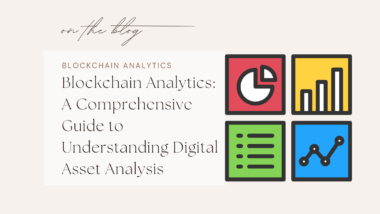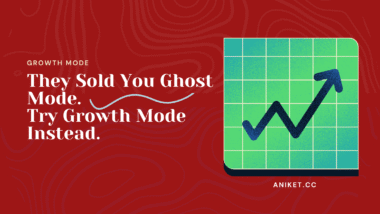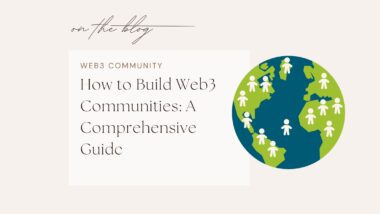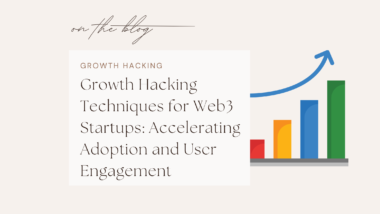The traditional marketing funnel is rapidly becoming obsolete. Web3 projects can no longer rely solely on paid advertisements, influencer promotions, or even traditional marketing tactics. Instead, they thrive on Community-Led Growth (CLG)—a strategy where users, contributors, and early adopters become the primary drivers of awareness, engagement, and adoption. Unlike Web2, where companies spend vast sums on acquiring customers, Web3 leverages decentralized communities to organically scale projects through trust, shared incentives, and participatory governance.
CLG isn’t just a buzzword; it’s the foundation of the most successful Web3 projects like Ethereum, Solana, Uniswap, and Arbitrum. But how does one build, scale, and sustain a community that fuels growth in a decentralized ecosystem? It requires a deep understanding of governance, incentives, engagement strategies, and long-term sustainability.
This guide provides a comprehensive, step-by-step roadmap for implementing a strong community-led growth strategy.
✅ What Community-Led Growth is and why it matters in Web3
✅ Key pillars of CLG in Web3 projects
✅ Effective strategies to build and nurture an engaged community
✅ How to measure success and sustain long-term community growth
✅ Best practices and case studies from successful projects
✅ Advanced strategies for sustaining long-term engagement
✅ The role of DAOs, NFTs, and tokenomics in CLG
✅ Challenges and solutions in community management
✅ The future of Web3 communities and emerging trends
✅ The role of social media, content, and educational initiatives in CLG
✅ How partnerships and collaborations can supercharge community growth
✅ Community analyticsand key performance indicators (KPIs) to track growth
✅ The role of offline events, hackathons, and ambassador programs in fostering community expansion
✅ Legal and regulatory considerations for community-driven projects
✅ Advanced techniques in gamification and behavioral psychology for engagement
By the end of this guide, you will have a complete understanding of how to leverage CLG to drive adoption and success in Web3 projects. 🚀
What is Community-Led Growth in Web3? 🏷️
Community-Led Growth (CLG) is a user-driven approach where the community itself becomes the primary marketing engine. Unlike Web2 companies that rely on ad-driven user acquisition, Web3 projects empower their communities to educate, onboard, and retain new users. These communities form the backbone of decentralized projects, ensuring long-term sustainability without reliance on a central entity for user acquisition and retention.
Core Principles of Community-Led Growth in Web3
- Decentralization: Decision-making and ownership are shared among community members, rather than controlled by a centralized entity.
- Incentivization: Community members are rewarded through tokens, governance rights, or other economic incentives for their contributions.
- Participation-Driven Growth: The more engaged and active the community, the more valuable the network becomes.
- Long-Term Sustainability: A community-driven approach reduces reliance on costly marketing campaigns and instead fosters organic growth.
How CLG Differs from Traditional Growth Models
| Aspect | Web2 Growth Model | Web3 Community-Led Growth |
| Marketing | Paid ads, influencer collaborations | Organic, word-of-mouth advocacy |
| Control | Centralized marketing team | Decentralized community involvement |
| Customer Engagement | One-way communication | Two-way interaction, governance participation |
| Retention | Loyalty programs, re-targeting ads | Token incentives, governance voting, exclusive perks |
Why Does CLG Matter in Web3?
🛡️ Trust & Decentralization – Web3 operates on trustless networks where users rely on smart contracts rather than centralized authorities. A strong community fosters credibility and resilience.
🌐 Network Effects – According to Metcalfe’s Law, a network’s value is proportional to the square of its connected users. The more users engage, the more valuable the network becomes.
💰 Sustainability – Paid marketing is expensive and short-lived. A thriving community reduces reliance on constant ad spend and ensures organic, word-of-mouth growth.
Tokenomics & Ownership – In Web3, users often have a stake in the project via tokens, aligning incentives for mutual growth. The more engaged users are, the more valuable the project becomes.
For a Web3 project to succeed, it must shift from transactional marketing to relationship-driven growth. Community members should not just be consumers but contributors, developers, and evangelists of the project.
What is Community-Led Growth in Web3
Community-Led Growth (CLG) is a go-to-market strategy where a project’s community drives adoption, retention, and expansion. Unlike traditional marketing, which relies on paid advertising and direct sales efforts, CLG leverages the enthusiasm, participation, and organic advocacy of users. In Web3, where decentralization is a core philosophy, CLG is particularly powerful. It transforms users from passive consumers into active co-creators, evangelists, and stakeholders in the project’s success. A well-nurtured community can create network effects, enhance project resilience, and accelerate mass adoption by fostering trust and engagement.
The Web3 landscape is unique in that projects often rely on grassroots support rather than corporate backing. This means that CLG is not just beneficial—it is essential for survival. When community members feel a sense of ownership and belonging, they naturally promote the project, contribute ideas, and defend it against competitors. Furthermore, community-driven initiatives such as decentralized governance, ambassador programs, and community grants reinforce the credibility and longevity of Web3 projects.
Key Pillars of CLG in Web3 Projects
| Pillar | Description |
|---|---|
| Decentralization & Ownership | Web3 communities distribute decision-making power through DAOs and governance tokens, ensuring user participation. |
| Transparency & Trust | Open-source development, regular community updates, and clear roadmaps help build trust. |
| Incentivization & Rewards | Airdrops, staking rewards, and NFT privileges encourage long-term engagement. |
| Collaboration & Contribution | Encouraging user-generated content and ambassador programs increases community involvement. |
| Education & Onboarding | Providing tutorials, explainer videos, and workshops makes Web3 more accessible for new users. |
- Decentralization & Ownership – Web3 communities thrive on the principle of decentralization. Unlike Web2 companies that retain central control, Web3 projects distribute decision-making power through DAOs (Decentralized Autonomous Organizations) and governance tokens. This ensures that users have a stake in the project’s evolution, making them more invested in its success.
- Transparency & Trust – Trust is a key driver of community engagement. Web3 projects that maintain transparency by sharing clear roadmaps, conducting regular community calls, and providing open access to development updates build stronger relationships with their users. Open-source development also fosters trust, as anyone can audit the code and contribute to improvements.
- Incentivization & Rewards – Token airdrops, staking rewards, NFT privileges, and bounties encourage active participation. By rewarding users for their contributions—whether through development, content creation, or advocacy—projects can sustain long-term engagement and loyalty.
- Collaboration & Contribution – Community members are more likely to stay engaged when they can contribute meaningfully. Encouraging user-generated content, developer participation in open-source projects, and ambassador programs allows users to take ownership of the ecosystem and feel valued.
- Education & Onboarding – Web3 concepts like blockchain, DeFi, and smart contracts can be complex for newcomers. Projects that provide educational resources—such as tutorials, explainer videos, workshops, and beginner-friendly documentation—enhance user adoption and retention. A well-informed community is more engaged and capable of advocating for the project.
Effective Strategies to Build and Nurture an Engaged Community
- Create Valuable Content – Content is king in community building. Projects should regularly publish high-quality educational articles, explainer videos, podcasts, and newsletters that provide insights into their ecosystem. Thought leadership pieces, technical deep-dives, and community spotlights help establish credibility and keep users informed.
- Engage on Social Media – Regular interaction on platforms like Twitter/X, Discord, Telegram, and Reddit fosters direct connections with users. Community managers and project leads should actively participate in discussions, respond to queries, and spark meaningful conversations to maintain engagement.
- Host AMA Sessions & Twitter Spaces – Direct interaction between the team and the community builds trust and keeps users engaged. Regular AMAs (Ask Me Anything) and Twitter Spaces provide transparency, allow users to ask questions, and make them feel like valued stakeholders in the project.
- Encourage User-Generated Content – Content creation contests, meme competitions, blog bounties, and video reviews incentivize users to actively promote the project. User-generated content not only increases reach but also adds authenticity to the brand’s messaging.
- Foster Exclusive Access – Providing VIP Discord channels, NFT-gated content, beta testing opportunities, and exclusive perks to early adopters strengthens loyalty. When users feel like they are part of an elite group, they are more likely to remain engaged and advocate for the project.
How to Measure Success and Sustain Long-Term Community Growth
To ensure continuous growth, it is crucial to track key performance indicators (KPIs). The following metrics help gauge community health and sustainability:
| Metric | Purpose |
| Active Members | Tracks daily and monthly active users in community channels like Discord and Telegram. |
| Engagement Rates | Analyzes likes, shares, comments, and retweets to assess community interaction levels. |
| Retention & Churn Rates | Measures how many users stay engaged over time versus those who drop off. |
| User Contribution | Tracks governance proposals, content submissions, and open-source contributions. |
| Network Effect | Evaluates referral growth, organic mentions, and word-of-mouth impact. |
- Active Members – Measure the number of daily and monthly active users on communication channels such as Discord, Telegram, and forums. A thriving community maintains high engagement levels over time.
- Engagement Rates – Analyze likes, shares, comments, and retweets across social media platforms. High engagement indicates a strong, interactive user base that actively participates in discussions.
- Retention & Churn Rates – Track how many users stay engaged versus how many drop off. A declining retention rate may indicate a need for better engagement strategies.
- User Contribution – Monitor the number of governance proposals, content submissions, open-source code contributions, and participation in community-led initiatives. A self-sustaining community is one where users actively contribute beyond passive consumption.
- Network Effect – Assess referral growth, organic mentions, and word-of-mouth marketing. A project with a strong network effect sees consistent community expansion without heavy reliance on paid promotions.
Best Practices and Case Studies from Successful Projects
- Ethereum – Ethereum’s success is deeply rooted in its developer community. By fostering open-source contributions, organizing global hackathons, and funding ecosystem projects through grants, Ethereum has built one of the most engaged communities in Web3.
- Bored Ape Yacht Club (BAYC) – The NFT community-driven project has mastered exclusivity. By offering membership perks, real-world events, and celebrity endorsements, BAYC has cultivated a strong, loyal following.
- Uniswap – With its community-driven governance and incentives for liquidity providers, Uniswap has successfully scaled into one of the leading decentralized exchanges.
Strategies for Sustaining Long-Term Engagement
- Progressive Incentives – Introduce tiered reward structures that encourage continued participation. Gamify engagement by offering increasing benefits over time.
- Cross-Community Collaborations – Partner with other Web3 projects, DAOs, and NFT communities to create shared value and mutual exposure.
- Evolving Utility – Continuously innovate and expand the use cases of tokens, NFTs, and platform features to maintain user interest.
- User-Generated Governance – Allow the community to actively shape the project’s direction through voting, proposal mechanisms, and decentralized decision-making.
The Role of DAOs, NFTs, and Tokenomics in CLG
Decentralized Autonomous Organizations (DAOs), Non-Fungible Tokens (NFTs), and tokenomics play a crucial role in Community-Led Growth (CLG) within Web3 ecosystems. These elements enable decentralized governance, incentivization, and member engagement, fostering stronger participation and deeper commitment among community members. 🚀
- DAOs: Empower community members by allowing them to vote on critical decisions, ensuring fair and democratic governance without the need for centralized control. This enhances transparency and builds trust within the community.
- NFTs: Facilitate digital ownership, exclusive memberships, and special privileges, making communities more engaging and rewarding for participants. They create a sense of belonging and ownership that strengthens community bonds. 🎨
- Tokenomics: Structures economic incentives that drive participation, staking, and contributions within a community, ensuring long-term sustainability. A well-designed token economy encourages active involvement and rewards valuable contributions.
- Use Case: Communities like Friends With Benefits (FWB) leverage tokenomics and NFTs to create exclusive membership access and incentivize participation, showcasing how these Web3 tools can be effectively used for engagement. 💡
Challenges and Solutions in Community Management
Managing Web3 communities presents unique challenges due to decentralization, anonymity, and governance complexities. Addressing these requires strategic solutions tailored to the evolving landscape of digital communities. 💭
| Challenge | Solution |
| Engagement & Retention | Gamification, reward mechanisms, and active moderators enhance participation. |
| Decentralized Decision-Making | DAO proposals and transparent governance ensure structured decision-making. |
| Spam & Sybil Attacks | Token-gated access and reputation-based scoring systems help prevent malicious activities. |
| Fragmentation Across Platforms | Cross-platform integrations and centralized discussion hubs improve cohesion. |
- Challenge: Engagement & Retention
- Solution: Use gamification elements, reward mechanisms, interactive discussions, and active community moderators to maintain high engagement levels and keep members involved.
- Challenge: Decentralized Decision-Making
- Solution: Implement structured DAO proposals, transparent governance mechanisms, and easy-to-understand voting systems to facilitate smooth decision-making processes within the community.
- Challenge: Spam & Sybil Attacks
- Solution: Use token-gated access, reputation-based scoring systems, and identity verification methods where necessary to prevent spam and malicious activities. 🛡️
- Challenge: Fragmentation Across Platforms
- Solution: Leverage cross-platform integrations, centralized hubs for discussions, and aggregated analyticstools to maintain a cohesive and well-connected community. 🌐
The Future of Web3 Communities and Emerging Trends
As Web3 continues to evolve, community-driven ecosystems will witness new trends that redefine engagement, governance, and monetization, making communities more dynamic and sustainable. 🌟
- Metaverse & Immersive Experiences: Communities will increasingly integrate virtual spaces for networking, collaborations, and exclusive events, enhancing digital interactions in an immersive way. 🎮
- AI-Driven Moderation: Artificial Intelligence tools will streamline community moderation, automatically detecting spam, filtering harmful content, and ensuring a safer, more welcoming environment for all members. 🤖
- Cross-Chain Communities: Interoperability between different blockchains will enable seamless engagement across multiple ecosystems, fostering inclusivity and broader participation. 🔗
- Soulbound Tokens (SBTs): These non-transferable tokens will be used for verifying credibility, proving contributions, and establishing on-chain identities within communities. 🏅
- Decentralized Social Media: Platforms like Lens Protocol and Farcaster will empower communities by giving them ownership over their content and data, reducing reliance on centralized platforms. 📢
The Role of Social Media, Content, and Educational Initiatives in CLG
Strong educational content and effective social media strategies drive engagement, user adoption, and sustained growth in Web3 communities, helping members stay informed and involved. 📚
- Social Media: X (Twitter), Discord, and Telegram serve as the primary channels for real-time updates, discussions, and community interactions, ensuring instant connectivity and engagement. 📲
- Content Strategy:
- Blogs and Medium articles help educate users on key topics and developments within the ecosystem, providing in-depth knowledge and value.
- Video tutorials, Twitter Spaces, and live AMAs foster interactive learning experiences, making complex topics easier to understand. 🎥
- Infographics, explainer threads, and bite-sized content pieces ensure quick knowledge-sharing and increase engagement on social platforms. 📊
- Educational Initiatives:
- Webinars, virtual workshops, and structured bootcamps help onboard new users, teaching them essential concepts and best practices in Web3.
- On-chain credentials, learning rewards, and interactive quizzes incentivize users to actively participate in the learning process. 🎓
- Developer-focused hackathons encourage innovation and growth within the ecosystem, leading to new ideas and projects. 💡
The Role of DAOs, NFTs, and Tokenomics in CLG
Decentralized Autonomous Organizations (DAOs), Non-Fungible Tokens (NFTs), and tokenomics play a crucial role in Community-Led Growth (CLG) within Web3 ecosystems. These elements enable decentralized governance, incentivization, and member engagement, fostering stronger participation and deeper commitment among community members. 🚀
- DAOs: Empower community members by allowing them to vote on critical decisions, ensuring fair and democratic governance without the need for centralized control. This enhances transparency and builds trust within the community.
- NFTs: Facilitate digital ownership, exclusive memberships, and special privileges, making communities more engaging and rewarding for participants. They create a sense of belonging and ownership that strengthens community bonds. 🎨
- Tokenomics: Structures economic incentives that drive participation, staking, and contributions within a community, ensuring long-term sustainability. A well-designed token economy encourages active involvement and rewards valuable contributions.
- Use Case: Communities like Friends With Benefits (FWB) leverage tokenomics and NFTs to create exclusive membership access and incentivize participation, showcasing how these Web3 tools can be effectively used for engagement. 💡
The Future of Web3 Communities and Emerging Trends
As Web3 continues to evolve, community-driven ecosystems will witness new trends that redefine engagement, governance, and monetization, making communities more dynamic and sustainable. 🌟
- Metaverse & Immersive Experiences: Communities will increasingly integrate virtual spaces for networking, collaborations, and exclusive events, enhancing digital interactions in an immersive way. 🎮
- AI-Driven Moderation: Artificial Intelligence tools will streamline community moderation, automatically detecting spam, filtering harmful content, and ensuring a safer, more welcoming environment for all members. 🤖
- Cross-Chain Communities: Interoperability between different blockchains will enable seamless engagement across multiple ecosystems, fostering inclusivity and broader participation. 🔗
- Soulbound Tokens (SBTs): These non-transferable tokens will be used for verifying credibility, proving contributions, and establishing on-chain identities within communities. 🏅
- Decentralized Social Media: Platforms like Lens Protocol and Farcaster will empower communities by giving them ownership over their content and data, reducing reliance on centralized platforms. 📢
The Role of Social Media, Content, and Educational Initiatives in CLG
Strong educational content and effective social media strategies drive engagement, user adoption, and sustained growth in Web3 communities, helping members stay informed and involved. 📚
- Social Media: X (Twitter), Discord, and Telegram serve as the primary channels for real-time updates, discussions, and community interactions, ensuring instant connectivity and engagement. 📲
- Content Strategy:
- Blogs and Medium articles help educate users on key topics and developments within the ecosystem, providing in-depth knowledge and value.
- Video tutorials, Twitter Spaces, and live AMAs foster interactive learning experiences, making complex topics easier to understand. 🎥
- Infographics, explainer threads, and bite-sized content pieces ensure quick knowledge-sharing and increase engagement on social platforms. 📊
- Educational Initiatives:
- Webinars, virtual workshops, and structured bootcamps help onboard new users, teaching them essential concepts and best practices in Web3.
- On-chain credentials, learning rewards, and interactive quizzes incentivize users to actively participate in the learning process. 🎓
- Developer-focused hackathons encourage innovation and growth within the ecosystem, leading to new ideas and projects. 💡
How Partnerships and Collaborations Can Supercharge Community Growth
Strategic collaborations and partnerships are essential for expanding Web3 communities, enabling them to reach new audiences, leverage resources, and build stronger ecosystems. 🤝
- Cross-Community Collaborations: Partnering with similar or complementary projects helps in mutual growth, audience expansion, and knowledge sharing.
- Brand Partnerships: Aligning with established Web3 companies or influencers brings credibility and increased visibility to the community.
- Joint Events & AMAs: Hosting joint Twitter Spaces, podcasts, and educational sessions with industry leaders enhances engagement and attracts new members.
Community Analytics and Key Performance Indicators (KPIs) to Track Growth
Tracking the right KPIs helps in measuring the success of a Web3 community and making data-driven improvements. 📊
- Engagement Metrics: Active members, retention rates, and participation in discussions indicate how engaged the community is.
- Growth Metrics: Follower count, new sign-ups, and referral growthhighlight expansion trends.
- Governance Metrics: DAO proposal participation, voting turnout, and contribution levels reflect community involvement in decision-making.
The Role of Offline Events, Hackathons, and Ambassador Programs in Fostering Community Expansion
Real-world engagement through offline events, hackathons, and ambassador programs strengthens community relationships and deepens member involvement. 🌍
- Meetups & Conferences: Organizing in-person gatherings builds trust and enhances networking opportunities within the community.
- Hackathons: Encourage developers and creators to contribute new ideas, fostering innovation and ecosystem growth.
- Ambassador Programs: Empower community advocates to spread awareness, onboard new users, and act as the face of the community in different regions. 🎤
Legal and Regulatory Considerations for Community-Driven Projects
Understanding the legal landscape is crucial for running compliant and sustainable Web3 communities. ⚖️
- Token Compliance: Ensuring adherence to securities laws, especially for communities using native tokens, is essential to avoid legal risks.
- Data Privacy & Security: Protecting user data and following GDPR or equivalent regulations builds trust among members.
- Decentralized Governance Risks: Structuring DAOs in legally sound ways can prevent conflicts and ensure regulatory compliance.
Advanced Techniques in Gamification and Behavioral Psychology for Engagement
Applying gamification and behavioral psychology helps sustain engagement and incentivize participation within Web3 communities. 🎮
- Reward Systems: Using badges, leaderboards, and token-based incentives to recognize active members boosts engagement.
- Psychological Triggers: Scarcity, FOMO (fear of missing out), and social proof encourage participation and increase retention.
- Interactive Challenges: Quizzes, contests, and missions make community engagement fun and rewarding, leading to long-term involvement.
Advanced Strategies for Community Growth
1. Gamification & Behavioral Psychology in Community Building
Gamification techniques can significantly enhance user engagement and retention. By introducing reward systems, leaderboards, and tiered memberships, Web3 projects can drive more interaction.
2. The Role of NFTs in Community Engagement
NFTs are not just digital collectibles; they can serve as exclusive membership tokens, rewards, or governance tools within a community.
3. Web3 Ambassador Programs
Ambassadors play a key role in spreading awareness, onboarding new users, and fostering engagement. A well-structured ambassador program can scale your community-led efforts.
4. On-Chain Community Analytics & KPIs
Tracking community growth using on-chain metrics helps measure engagement, participation, and long-term retention. Tools like Dune Analytics, Nansen, and Messari provide insights into community trends.
Conclusion: The Future of Web3 Growth is Community-Led 🚀
Community-led growthis the defining strategy for Web3 success. Projects that prioritize collaboration, governance, and organic advocacy will thrive in the decentralized world. By implementing transparent governance models, strong incentive structures, and meaningful engagement initiatives, Web3 projects can build lasting ecosystems that grow organically, sustainably, and resiliently.
🔥 Now it’s your turn! How will you implement CLG in your Web3 project?
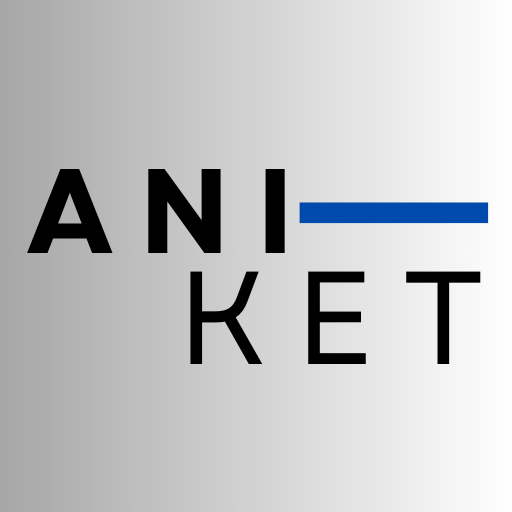
I write about – Web3 | Growth | Data — and everything in between.

